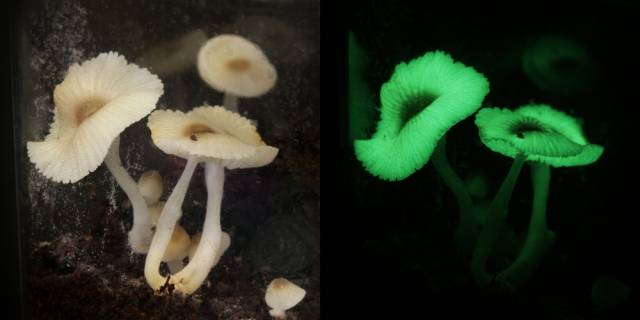728
Old records, including the works of Aristotle, mention “cold fire” glows coming from fungi that live on rotting wood. It was originally thought that their glow served to attract pollinators.
The researchers studied the fungus Neonothopanus gardneri and found that it regulates its bioluminescence according to a circadian rhythm, peaking at night to attract more insects that could detect it in the dark.
The mechanism of spread through animal attraction gives fungi a great advantage, especially in dense forests where it is more difficult for spores to settle over a large area.

